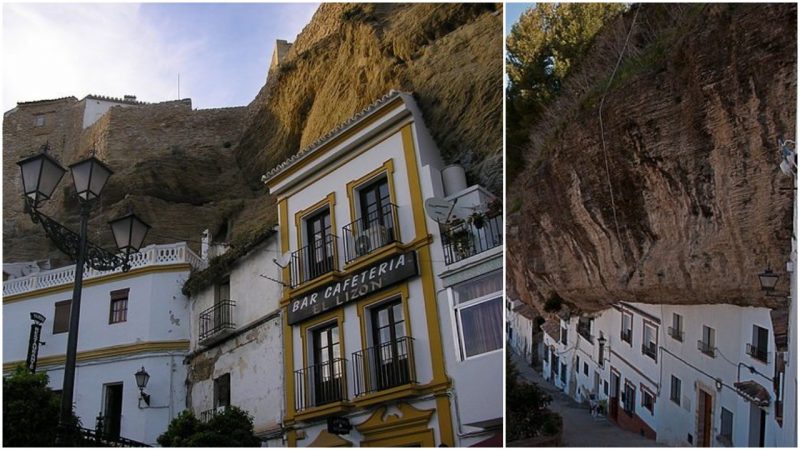There is a small settlement in the province of Cadiz in southern Spain where people, it seems, found a way to live in the most efficient manner and in total sync with nature. Many of the dwellings here are found, quite literally, under a rock, just like the saying and somewhat like cavemen … but not exactly.
Concealed from the scorching Spanish sun, Setenil de las Bodegas is a small pueblo blanco (Andalusian white village) and is home today to almost 3,000 residents and a tourist attraction for thousands.
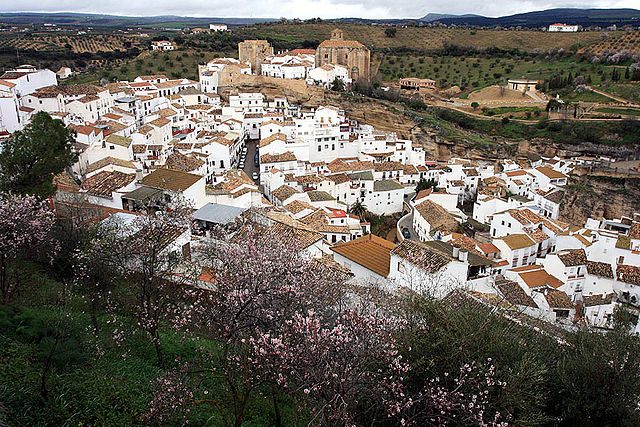
At first glance, the place makes one wonder if the houses were formed beneath these rocks, or if it was vice versa. The first homes were built into the cliff-face thousands of years ago, and over the years have been expanded between the boulders and beneath the rocky overhang that shelters these white houses from the heat of the Spanish summers.
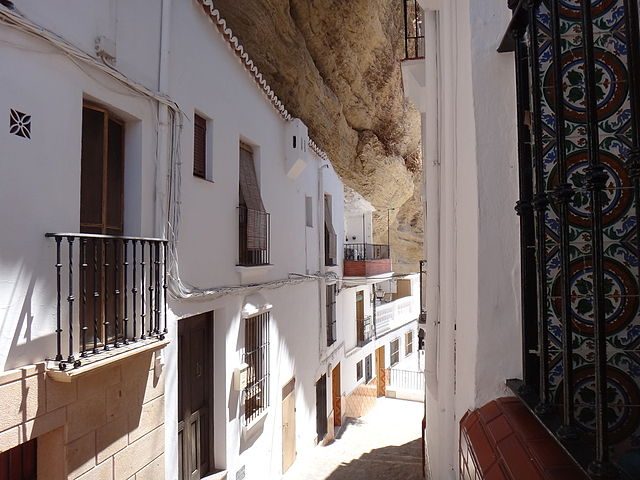
According to popular belief, the natural caves of Setenil were indeed inhabited from the dawn of time, or at least as far back as 20,000 B.C. At least this is what nearby prehistoric cave settlements suggest. For instance, the Cueva de la Pileta that sits just outside the magnificent mountaintop city of Ronda, in Malaga province, just 20 to 30 minutes drive from Setenil, have been found to show signs of humans from the Paleolithic and the Neolithic periods. Drawings inside the caves here are believed to be more than 20,000 years old.
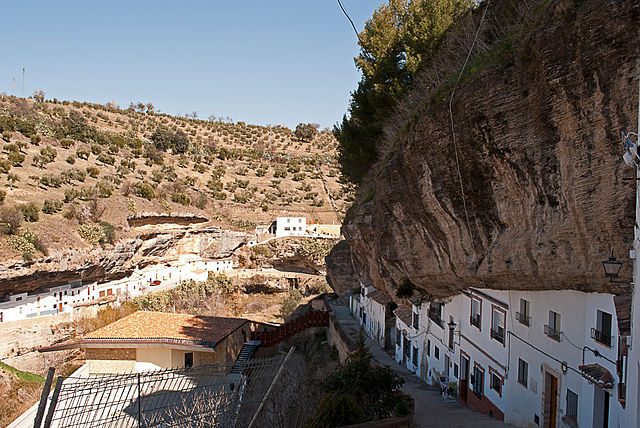
What this highly unusual village does offer are blinding white houses with rock instead of ceilings for a hundred homes and shops, and olive groves instead of roofs; it’s a unique experience to walk or drink a cup of coffee in the shade below a giant looming rock, as well as a chance to learn the peculiar history of how it got its name and why it was built as it is, here above the Rio Trejo and right in the middle of the well-trodden pathway through the White Villages of Andalucía.
What is known for sure is that it was continually inhabited from the 12th century, in the Arabic Almohad period. There are also indications of pre-Roman inhabitants and noticeable traces of former Roman dwellers scattered here and there to back a claim that the town existed even earlier, 2,000 years ago when allegedly it was seized and held by the Romans during their invasion of the Iberian peninsula.
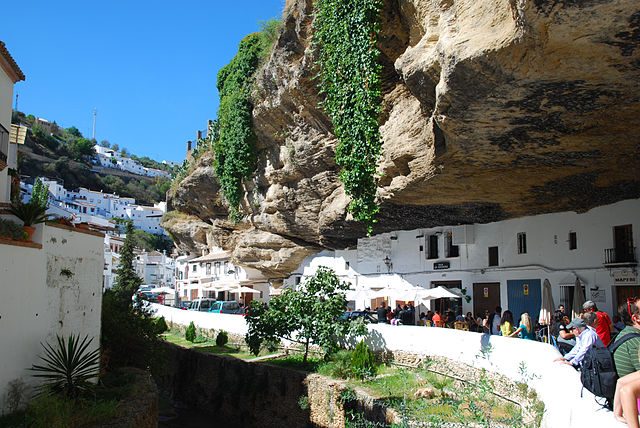
The same claim says that during the Umayyad conquest of Hispania and the Umayyad Caliphate expansion across Europe in 8th century A.D., Moors captured the whole peninsula. This village then fell under their rule and it was theirs to keep for seven long centuries until the Christians recaptured it once again, expelled the Moors, and marked the fall of the Nasrid Dynasty (the last Arab Muslim dynasty in Iberia). Which proved to be a harder task than was first believed.
According to town history, Setenil de las Bodegas’s steep and rocky nature proved to be “solid as a rock” and of an advantage to the medieval Arabian inhabitants as they were trying to fend off the Christians’ attacks, which they did successfully six times and over 80 years, allegedly until 1484, when on the seventh, and after 15 days of constant siege, Christian forces finally managed to overrun the town’s castle.
What’s left of Castillo de Setenil de las Bodegas speaks about this epic holdout, its rich history, and how this place got its name. It comes from two Latin words, “septem nihil,” which means seven nothings, or seven times no. As for the second part of its name, “de las Bodegas,” it came from what followed after 1484 and these legendary skirmishes.
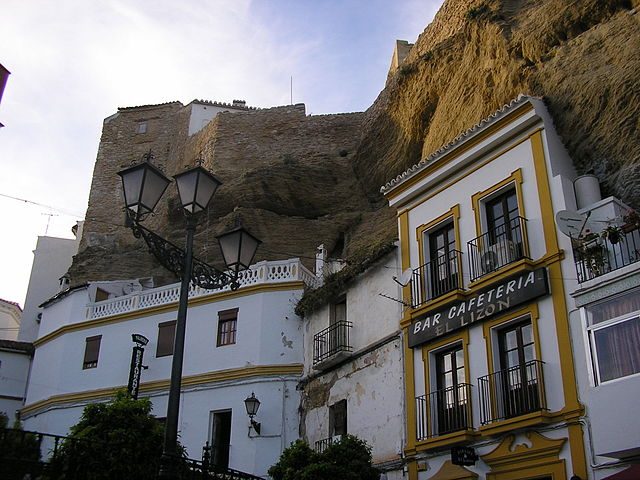
The Catholic settlers furnished Setenil as a modern town and brought olives, almonds, and vineyards along with recipes for dried meat specialties when they arrived. They began to use the shade of the rocks and their natural air-conditioning capability to store their products, especially grapes, usually placed in large storerooms under the giant overhangs. Which is most probably how the place earned its name de las Bodegas, “of the vineyards.” Unfortunately, the vineyards were all wiped out by phylloxera insect infestation during the mid-1800s, when almost all of the wine industry in Europe was destroyed by these pests.
Two of the vineyards are still flourishing after all this time on top of the hills of Setenil, and the well-preserved Moorish fortress looms on top of the ravine in which the village was built. There’s also a street where one humongous overhang covers a whole block of white painted cafes and dozens of small restaurants and where a local owner can tell you all about this place while serving you a cup of wine and an amazing chorizo, Setenil’s special.
